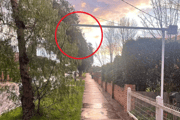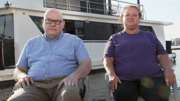
A dangerous bacterial infection that most Australians had never heard of is quietly spreading across the country.
It was disproportionately affecting the people who needed protection most—older adults and Indigenous communities in remote areas.
And the rates were alarming enough to make medical experts sit up and take notice.
Streptococcus dysgalactiae subspecies equisimilis, shortened to SDSE, sounded like medical jargon, but it was emerging as a serious health threat.
Known as a 'cousin of strep A', SDSE carried a case fatality rate of 6–7.8 per cent, with around 10 per cent of patients requiring intensive care treatment.
For years, it had flown under the radar, but recent research showed the incidence of invasive SDSE disease was approaching that of the closely related Streptococcus pyogenes.
Older Australians were at the highest risk.
People with chronic conditions such as cancer, diabetes, heart disease, or any condition that weakened their immune system were particularly vulnerable to severe infections.
'For years SDSE has been seen as a minor player compared to group A strep, but our study shows it is causing a significant and rising burden of severe disease in Australia, predominantly in older Australians.'
Early Signs and Rapid Escalation
The infection often started with seemingly minor symptoms, such as throat infections or superficial skin issues like tonsillitis, cellulitis, or erysipelas.
But SDSE could escalate quickly, invading the bloodstream and spreading to deep tissue sites, including the endocardium.
In severe cases, it could trigger life-threatening conditions such as streptococcal toxic shock syndrome, especially in patients with serious underlying illnesses.
Researchers identified warning signs that should never be ignored.
Sudden unconsciousness, difficulty breathing, unexplained falls, high fever with muscle aches, rapidly spreading skin infections, and signs of septic shock were all red flags.
The Peter Doherty Institute revealed that infection rates were 25 per cent higher in remote northern Australia than in the southeast, and Indigenous Australians were more than three times as likely to develop SDSE infections.
Professor Steven Truong of Royal Melbourne Hospital explained the findings highlighted 'the health inequalities for people living in remote northern Australia, especially Indigenous Australians living in remote areas.'
Within the Top End, First Nations Australians experienced more than three times the risk of invasive disease compared with non-First Nations individuals.
These disparities reflected complex social determinants of health, including limited access to healthcare, poor living conditions, and delayed opportunities for early intervention.
Despite the serious nature of SDSE infections, treatment remained effective when caught early.
Penicillin had remained almost universally effective against SDSE after more than 80 years of clinical use, making it the preferred therapy for both minor and invasive infections.
Treatment effectiveness
Penicillin remained 100 per cent effective against SDSE with no reported resistance after 80+ years of use.
Early treatment significantly improved outcomes, with most patients recovering fully when the infection was caught before it became invasive.
Prevention and Early Action
Early recognition and timely treatment were crucial to improving outcomes.
Frontline clinicians could use these findings to identify patients at highest risk of severe disease and mortality.
For older Australians and those with chronic health conditions, practical measures helped reduce risk.
Good hand hygiene, careful wound care, and prompt medical attention for suspicious throat or skin infections were essential.
Awareness that SDSE could naturally live on the skin or in the throat without causing illness, but sometimes lead to serious infection, was important for prevention.
Monitoring clinical signs, white blood cell counts, and C-reactive protein responses during early treatment improved survival chances.
What This Means For You
SDSE is an emerging bacterial threat that can cause serious complications, particularly for older adults, making awareness and vigilance essential.
Indigenous Australians living in remote northern regions face disproportionately high risks, highlighting broader health disparities that affect access to care and early intervention.
The good news is that penicillin remains highly effective against SDSE, which makes early recognition and prompt treatment critical to improving outcomes.
By understanding the warning signs and seeking medical attention without delay, you can protect yourself and your loved ones from potentially life-threatening illness.
Staying informed and proactive is the key to reducing risk and ensuring timely care.
If you found the information about SDSE concerning, there’s another infection you should be aware of that can escalate rapidly and become life-threatening.
This story explores a real-life example of how flesh-eating bacteria can progress from minor symptoms to severe illness in a short time.
Reading about this case can help you recognise warning signs earlier and understand the importance of prompt medical care.
Read more: Flesh-eating bacteria grips nation: What you need to know
Have you ever experienced or cared for someone with a severe bacterial infection, and how did you balance vigilance with daily life?







